Janjay admits it now. While we are having breakfast on the shores of Lake Piso, watching the army of hermit crabs laying at the bottom of the clear waters, he discloses that when foreign presidents visit Liberia, they stay here. And when Ellen Johnson Sirleaf, the president herself, travels to Grand Cape Mount County, it is where she stays.
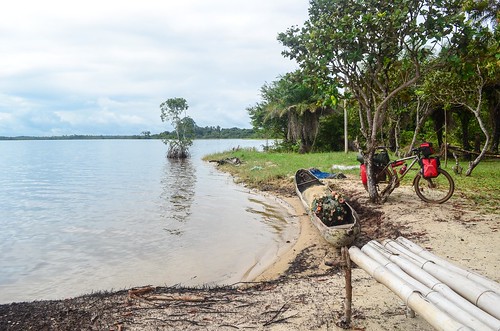
That explains why the houses have a prime location, with private generators and solar panels. Slightly proud to have spent the night in the presidential compound, we jump on our bikes and resume our journey towards Monrovia.
The unpaved road of good quality takes us back onto the main road link. We cycle the track almost together with a very loaded and very slow pick-up. We had witnessed it with problems earlier, like if one shock absorber of a rear wheel was broken. The tire couldn’t turn as it was blocked into the car body. When we see this pickup again, we notice they have bent the body panel so that the wheel can turn. But they cannot drive faster than us.
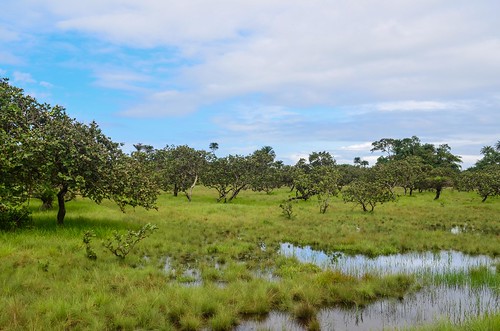
All of Liberia so far seems funded by UN agencies or other European country agencies. There seems to be more signs reading “this school/road/center/building is funded by …” than actual infrastructure.
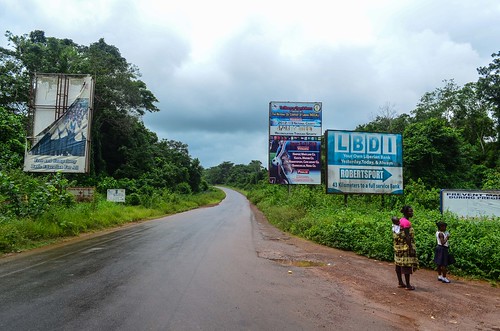
We reach the crossroads between Bo, Monrovia and Robertsport, where ladies sell corn and bread among people waiting for transportation. I find that the people in general don’t wear much of the traditional clothing, but I see a lot of bad mix of western style (including basketball shorts for men and women). The funniest styles come from the motorcycle taxi young drivers. Although it is said that many of them are former child soldiers, they are usually dressed like cool hipsters with skinny jeans, oversized plastic frame glasses, a bit of jewelry, a bit of fur, a Balotelli haircut, funny long socks, and of course the essential large headphones plugged into nothing.

When I see three dead monkeys behind the wall, I ask if it is allowed to eat them in Liberia, since it is forbidden in Guinea and Sierra Leone. A man goes on and on about how Liberia is the country of freedom and free men, as a justification that no one can tell him not to eat monkey meat. But even if there is a law about it, I am not sure that most of the population in the country would be aware of it, and even less sure they would abide by it. It has been several times I buy, or find in my plate, bits of chicken with strange bones and an unusual (but tasty) flavor.
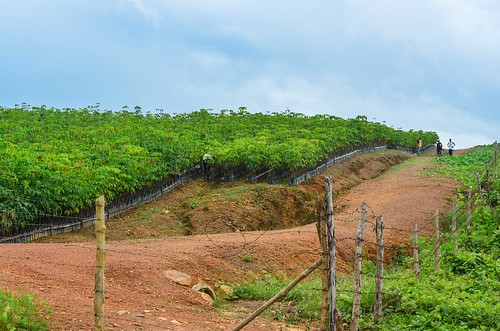
Many kilometers of the main road until Klay are going through the Sime Darby plantations. There is here a rubber nursery, where baby rubber trees are grown before being planted somewhere else, and palm fields. Sime Darby is one of the largest Malaysian companies with 100’000+ employees. It signed in 2009 a concession agreement with the Liberian government for the exploitation of 2200 sq. km, roughly the size of Luxembourg or Kanton St. Gallen, for 63+30 years …
In total, about 10% of Liberia’s total area is in the hands of three palm oil producing companies. The impact on the land and on the population that will eventually be moved, is still being discussed.
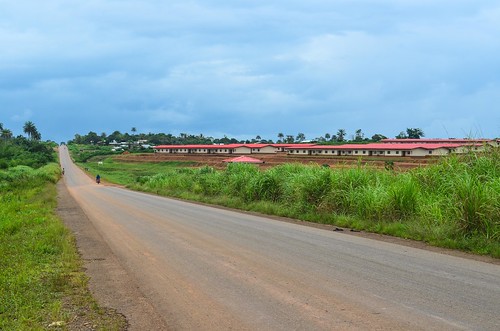
We reach the small crossroads town of Klay in the afternoon. It is only 40 km to Monrovia, but it is too late to make it by today. We decide instead to visit one of the very few attractions of Liberia, the Blue Lake of Bomi hills, 20 kilometers in the opposite direction. We can spend the night there and make it to Monrovia the next day.

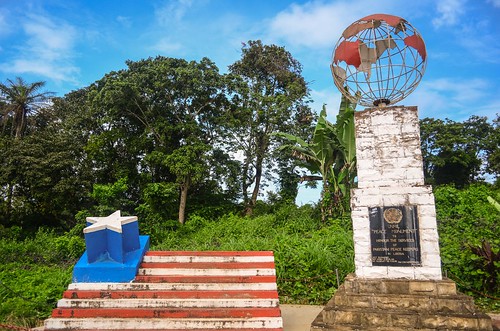

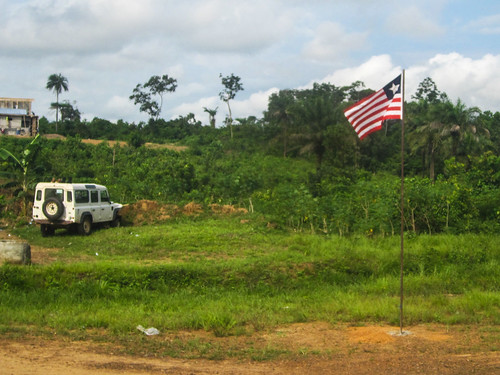

The Liberians don’t like photos. Unlike in Sierra Leone, where kids and adults request pictures, they shout “No photo!” when they see a camera, even if they are not framed.
Tubmanburg is the capital of the Bomi county and was an important iron and diamond center until the first civil war. It has not much to see, so we just collect food and look for the famous Blue Lake.


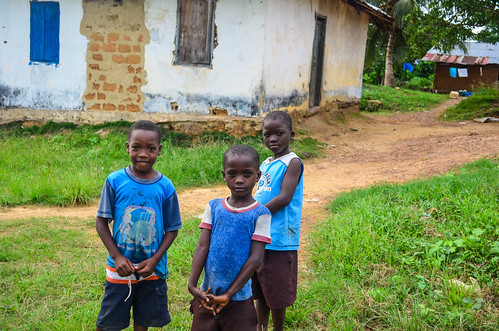
After Tubmanburg, the road turns into a track and we need to ask our way. There are no signs but everyone knows the Blue Lake. The track seems like going into nowhere. We pass by a UN base and the storage area of a drilling company until we reach the top of the hills. At 130 m a.s.l., it is not very high, but it is hard to cycle on the very bad surface. The road is most likely former paths for mining trucks.
We suddenly find ourselves in front of our destination: a beautiful circular lake with an interesting history.

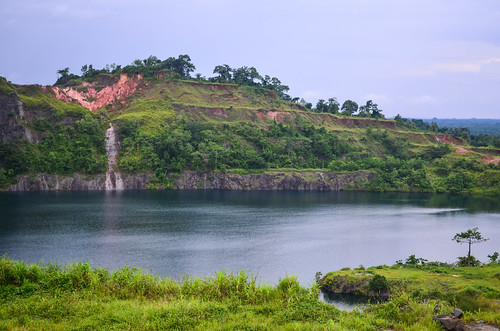
The Blue Lake has not always been there. It appeared some 20 years ago at the location of an iron ore mine, deserted by the operating company Lamco in 1977. The mining operations left large craters in the hills. One of them got magically filled with water, despite not being connected to any river, and the water level is now constant. It results in a 100-meter deep lake hidden in a crater at the top of a hill.
I found on the fantastic website Liberia77 some pictures of the area during the exploitation.


For more information about the Bomi mines, this page states interesting facts. For example, Liberia was at one point the world’s third largest iron ore exporter. The mining business in Liberia attracted at that time some of Sweden and Germany’s largest investments abroad. Lamco’s annual income from the sales of the Bomi Hills ore exceeded the total revenue of the Republic of Liberia until 1960.
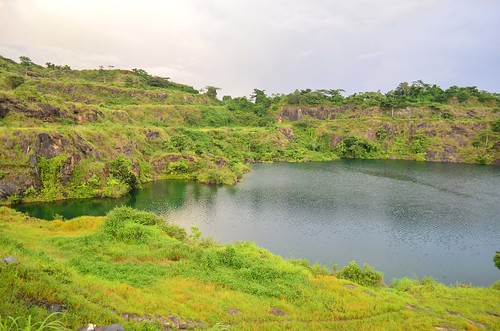
The lake has been since 2007 considered as a promising tourist destination. Also, a mineral water company found that the water of the lake was suitable for drinking and established a factory on the shores. In 2011, the bottling company was still running. According to this piece of news, the company relocated in April 2013 to Montserrado county, which means that three months are more than enough to have the facilities entirely scrapped: in July 2013, we could only find plastic tubes and a water quality report.
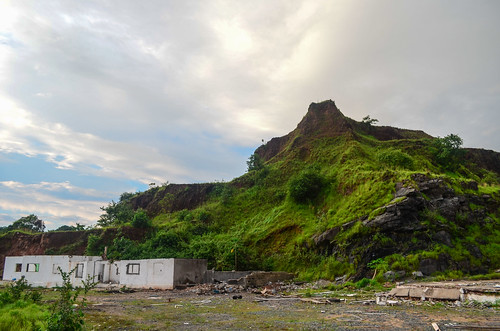
On the top of this interesting exercise of contemporary archaeology, we also gathered special information about the future of the lake. While cycling to Tubmanburg, we stopped a moment to take pictures of a metallic bridge (similar to this one) from the dismantled train line of the Mano River railway. At the same time, two 4×4 stopped and a group of Indian and Western people in suits took a look of the same bridge. They also took pictures of us and engaged the discussion, disclosing they were in the mining business, but remained mysterious about their mission in the area. We could only obtain “If you want to see the Blue Lake, do it quickly because it might be gone in 6 months!“. They were talking about restarting the operations in the Bomi Hills and drain the lake. It could be ArcelorMittal, since they are already present in the Nimba county in Eastern Liberia.

As we are looking for the perfect camp spot to spend the night, we walk a bit further down by the lake. We find other ruins, this time of a UN camp. This makes a perfect shelter for cooking our traditional 500g of spaghetti and to spend the night.
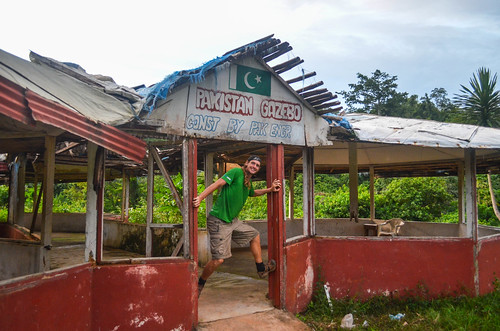

Tubmanburg was the headquarters of a rebel group during the civil war, and host now a large camp of the UNMIL. The Pakistani engineers from the UN have built this leisure camp but it is now decaying.
The best about this staying there is to wake up with the sunrise and a lucky blue sky near the lake. The water is very warm, very clean, in a very beautiful setup. The weaver birds sing from their nest-covered trees. It would really be a successful touristic location. There is a diving board, but I am thinking that if there is old heavy mining equipment and huge haul trucks still sleeping in the pit, it would also make a fantastic scuba diving spot.


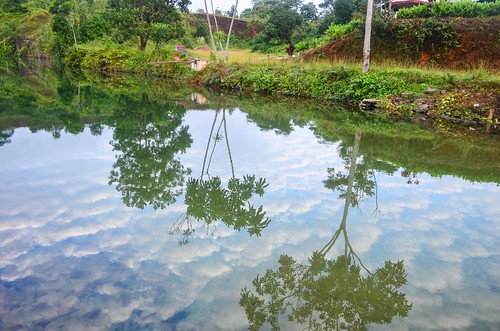
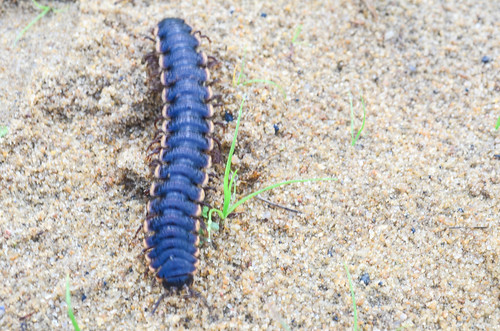
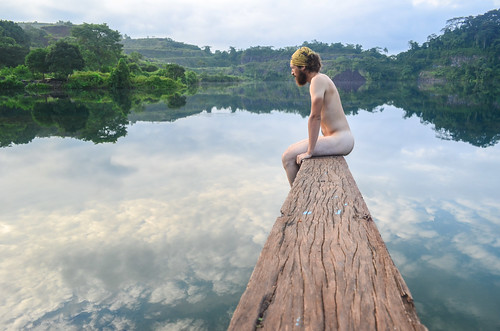
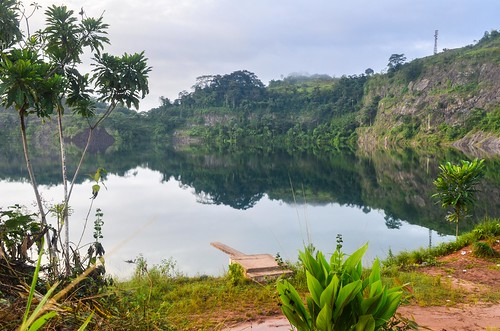
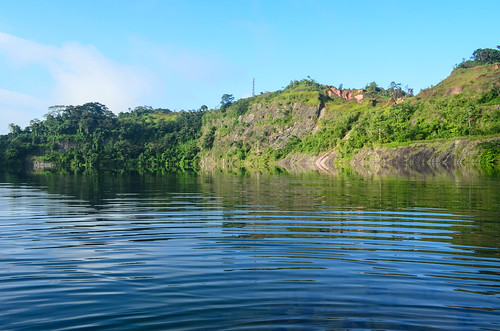

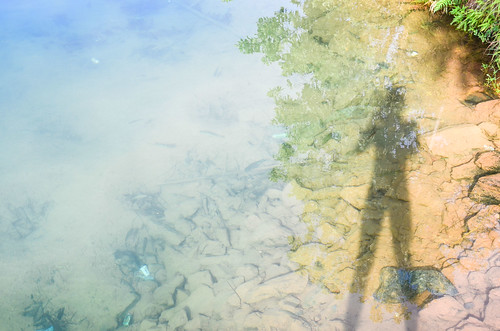
Once an ugly mining site, this charming place may return in the next years to the times of its high activity.
The first visitors are wood loggers working nearby who come to fetch water. At 9 am, soldiers from the UN take position in the Pakistani gazebo. It looks abandoned but the Nigerian peacekeeping force is actually here everyday. Considering the peaceful situation, there is not much to monitor. They have with them not only rifles, but also music, cigarettes, gin bottles, and ask us if we don’t have coke with us by any chance …
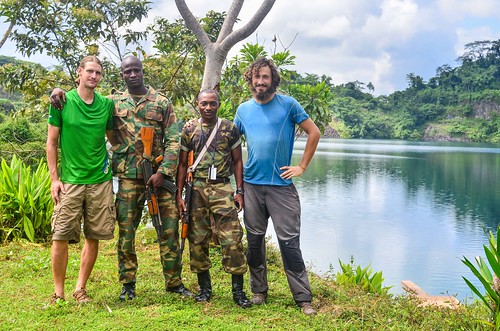
It is a rather easy job, maybe deserved as one of them just finished a mission in Mali. The UNMIL will progressively leave Liberia. It had up to 15000 military personnel, decreased nowadays to 8000. They say that the trouble could start again as the current president is not really successful in “re-booting” the life and the economy. It has been 10 years already since the war ended. They also ask us if we can swim. Yes, we can, but what for? “Then you go and swim in the lake and find diamonds! There have been some people doing it already, but they didn’t know how to swim, so they drowned“. This is the kind of nonsense that, sadly, has too much chance to be true. It already happened, while in Senegal, that some 20 fishermen died after their canoes capsized. The sea was rough, but they didn’t know how to swim anyway (and apparently didn’t want to wear the flashy life jackets because it looks gay).
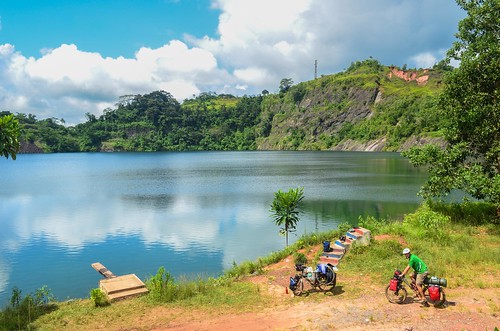
After the pleasant morning, we leave the camp before the rain catches us back.
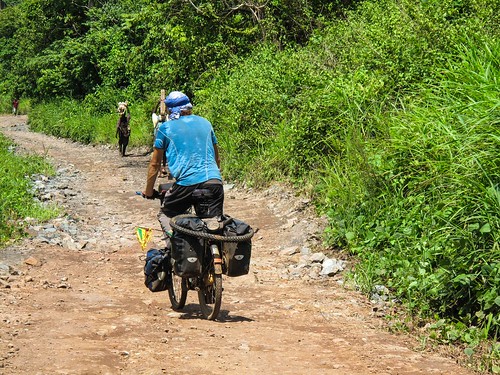
The weather looks nice but it rains already in Tubmanburg after only 20 minutes on the saddle.

The road back to Monrovia is pleasant when the sun shines again.

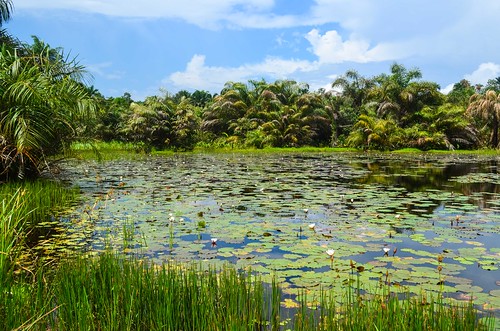
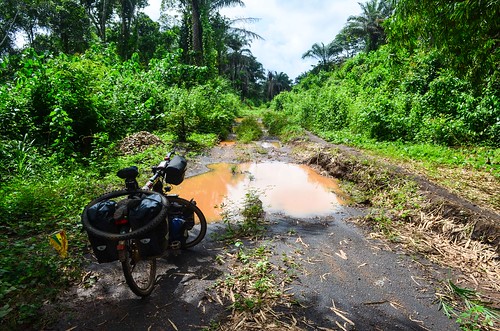

The traffic increases shortly before entering Monrovia on Bushrod Island. It is already late, and since we both don’t like to enter a big unknown city at night, we decide to stop just before and find a place to stay.
It is not as easy as we thought. We are already in the suburbs and every piece of jungle is inhabited. We pick a small road towards the coast but the houses never discontinue. We reach the end of the road in a kind of a slum without any house being of concrete or permanent. Everything is made of metallic sheets. It is night very soon and it is not really the best place to camp. The kids start chasing us and we escape as fast as we can on the sandy track behind the open air toilet. It lasts for a kilometer and isn’t a nice place to camp. It is a mangrove area.
Just after a river floods the track, the piste ends right in the sea, on a small beach next to a large house. It is closed so we camp behind it, hidden by houses in ruins. From the beach, we can see the lights of Monrovia.
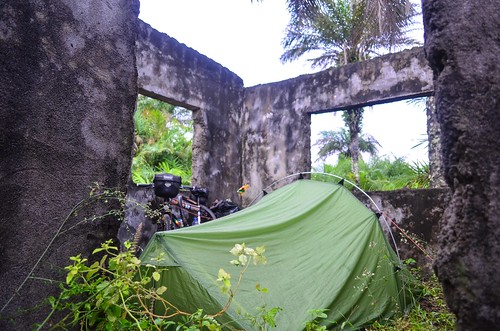
We wake up not too wet and the morning sun dries up our gear. The caretaker of the large house comes and observes us. He says he had to leave the house yesterday, but if he had been home, he would have offered us a room. He also calls friends so that they can observe us and ask the regular questions. The Liberians are really very talkative. We are asked very often “What’s your name? What’s your mission? What’s your purpose in life? Where do you come from? Where do you go? Do you take medicine? etc” by anyone, anywhere.
It happens also that people call us from afar while we are cycling: “Stop! Come over here! I want to talk with you!“. They will ask the same regular questions. Obviously we cannot stop all the time and tell the story of our life every time we buy a doughnut or refill our water bottles, to any bum or guard at a gate. That makes some of them angry: “You don’t talk?“.
My favorite talk is the one about my flag. I still carry a Senegal flag behind my bike, since I didn’t find any for Guinea-Bissau, Guinea and Sierra Leone. I should really update it to the Liberian one, once in Monrovia. The Senegal flag resembles the Ghanaian one, and despite the words “REP OF SENEGAL” written in bold, it often raises the question:
“– Are you from Ghana?
– No, I’m from Senegal.
– Ah, OK“
I walk along the beach to see if we can cycle out from the beach, in case the sand is hard enough. It doesn’t work, but my long walk showed me many abandoned large houses on the coast. Either in complete ruins, either squatted by families.
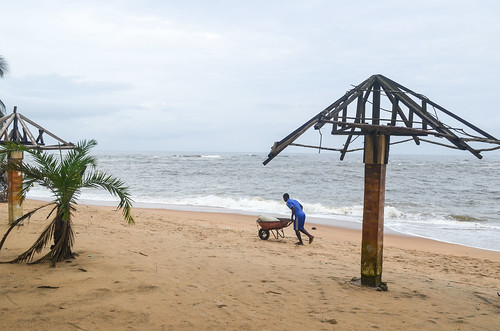
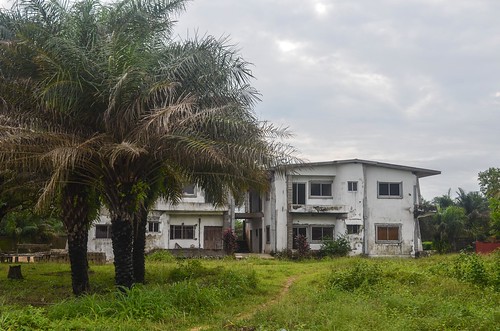

Once our gear is dry and packed, we head for the capital. We have plenty of time to reach Monrovia and find the best place to sleep.
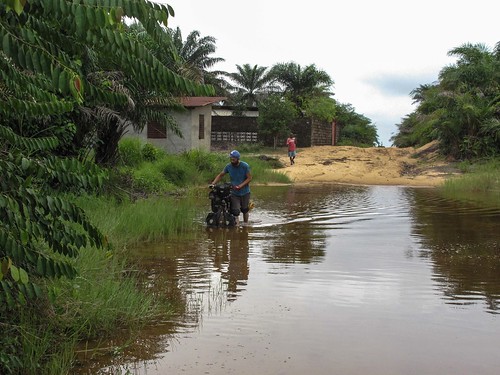
Before we can make it to the main road, we are asked to stop and let the presidential convoy pass. The main highway is blocked just for it. It makes a nice parade of 4×4. We can assume the president is in the central cars with tinted windows, after the 4×4 with men in black suits and rifles at the window, and before another 4×4 with the same rifles pointed outside the windows.
The entrance into Monrovia is a terrible mess. Besides a large market, Bushrod island hosts the freeport and the Maersk compounds. We have to survive among crazy taxis drivers, trucks and containers, ladies carrying buckets of stuff on their heads, men pushing wheelbarrows of clothes and random goods … until the proper entrance of the city and the two bridges. Of course, everyone who can honk or shout does it.
There, we stop at the first Ecobank we see. I had read that bank ATMs in Monrovia issue USD but wasn’t sure. I now am, and that is perfect. For 250 US$, I get only 5 bank notes, instead of 190 in local currency! The ATM doesn’t even give Liberian dollars.
The cheapest accommodation in Monrovia is a room at St Teresa’s convent: 25 USD / room with shared bathroom, or 30 USD for 2 persons. It is clean, but it is still incredibly expensive for Africa! This place is very strange. Still, we should be happy with this solution, if we refer to the alternatives offered in Mamba Point: the posh hotels or the average guesthouses “from 110 USD / night only“.
We would have flown that city of crazy prices very quickly if we hadn’t met Lisa to host us. More about Monrovia …







Lovely..Thanks so much for sharing.
Amazing photos. Thanks for sharing
Awesome story! I just returned from a trip (by car) to Blue Lake and it was absolutely amazing. I spent the entire day there and got a terrible sunburn but it was worth it. BTW the bottling plan is all but gone. Only a few pillars are still standing. We swam and dived in the lake but found no diamonds 🙂
No diamonds? I’m sure I have left some there …
hey JB,
that lonely, naked man on the plank could win Sony World Photography Competition – hahaha . submit it – http://worldphoto.org/competitions/sony-world-photography-awards-2014-open-competition/
Still had no time since you mentioned it … but I’ll find it before the deadline!